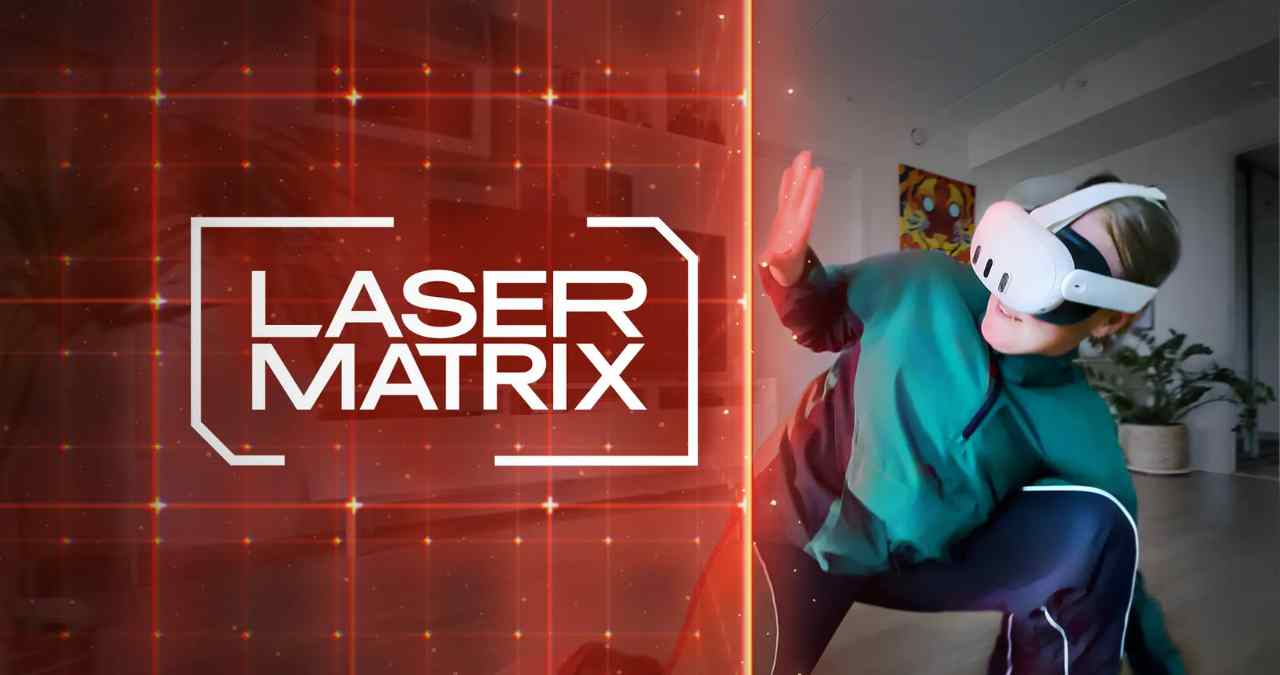In Laser Matrix, you’re not solving puzzles with buttons or managing resources. You’re using your body to survive. This VR title strips away narrative and progression systems in favor of something much simpler: lasers are coming at you from all directions, and your job is to avoid them.
The concept is basic, but the execution is all about physicality. It’s less about planning and more about instinct, reaction speed, and spatial awareness. Think of it as a VR obstacle course that’s constantly adapting to your position.
Gameplay is centered on real-time body movement
There are no weapons or powers in Laser Matrix. The core mechanic is your own movement. Lasers sweep across rooms in patterns that force you to duck, twist, lean, or crawl. One mistake, and you’re out. It’s essentially VR dodgeball, only the ball is a high-energy beam and the court is a cube filled with traps.
As you progress, the game increases complexity. Early levels have simple horizontal or vertical beams. Later stages introduce diagonal patterns, rotating emitters, and even multi-speed waves that layer on top of each other. The intensity scales quickly, which makes stamina a factor. You’re not standing still either. The game encourages constant repositioning. Staying put usually isn’t an option. The lasers adapt, and so must you.
Visual design is clean, readable, and reactive
The environment in Laser Matrix is minimal, designed to keep focus on the beams. The aesthetic lands somewhere between a sci-fi training facility and a digital test chamber. The lasers themselves are bright and color-coded for clarity, with visual effects that make it obvious where it’s safe and where it’s not.
There’s no clutter on the HUD, no scoreboards in your face. Just the arena, the lasers, and your own body movement. That simplicity helps the game feel focused. Every animation and visual effect is tuned to support the moment-to-moment challenge.
Lighting and spatial sound are also used to cue new threats. You’ll often hear a hum or buzz before a new emitter activates. That gives you just enough time to adjust your posture or pivot.
Platform availability and potential fitness appeal
The game is currently available on PC VR, with compatibility for common platforms via Steam. It doesn’t require any additional peripherals or trackers beyond your headset and controllers, although a clear play space is essential. You’ll be moving more than in most VR titles, especially at higher difficulty levels.
There’s no formal fitness mode, but it’s clear the game leans into that territory. The constant motion, squats, and torso twists can make a session feel like a workout, even if that’s not the goal. For players looking for active VR without rhythm mechanics or structured routines, Laser Matrix offers a different kind of movement challenge.
It sits in that narrow space between arcade action and physical endurance, where your success depends on how fast and how precisely you can move. No score multipliers or unlocks. Just your own ability to read the space and survive one more wave of light.
Virtual Reality Explorer & Game Reviewer
Always the first to plug in. VRSCOUT dives head-first into the most immersive VR worlds, analyzing mechanics, comfort, innovation, and that elusive “presence” factor. If he says it’s worth it, it probably is.




